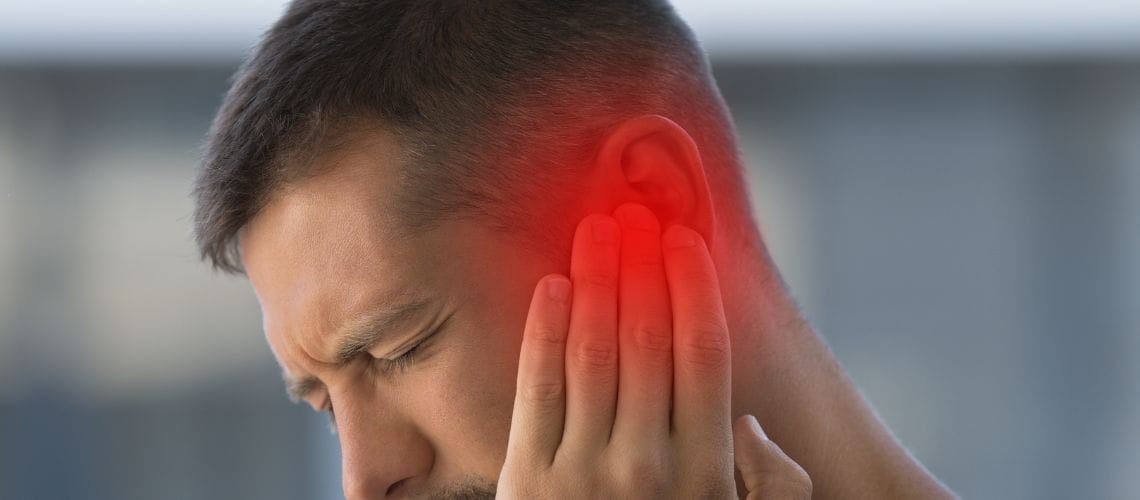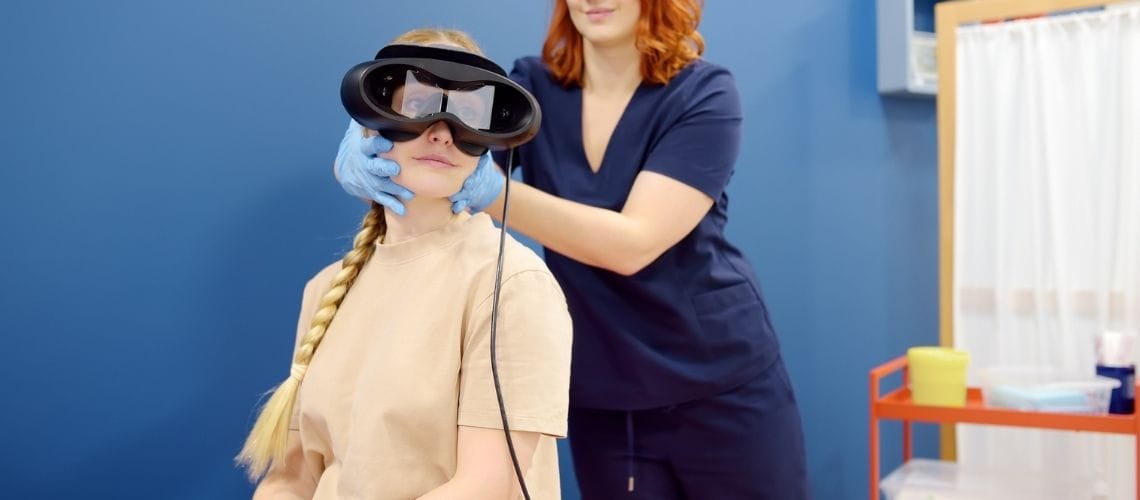Labyrinthitis is a disorder that occurs as a result of an infection (inflammation) of the inner ear and generally presents with symptoms such as severe dizziness, nausea, and loss of balance. The treatment of this condition varies depending on the underlying cause and the severity of the symptoms. In viral labyrinthitis, rest, fluid intake, and symptomatic medications are preferred, while in cases of bacterial infection, antibiotics and, if necessary, surgical interventions are applied. Vestibular rehabilitation is recommended for patients with persistent balance problems during the treatment process. This approach is an effective method to strengthen balance and reduce dizziness. In fact, the earlier rehabilitation is initiated, the more beneficial it is. The management of labyrinthitis aims to improve patients’ quality of life through proper treatment.
What is Labyrinthitis and How Does It Affect the Inner Ear?
Labyrinthitis is a disorder that arises from an infection of the inner ear. The labyrinth, located in the inner ear, is composed of the vestibular system—which regulates balance—and the cochlea, which is responsible for hearing. When these structures become infected, the transmission of balance and hearing information via the nerves to the brain is disrupted.
Labyrinthitis Symptoms:
- Dizziness
- Imbalance
- Hearing Loss
- Tinnitus
- Nausea
- Vomiting
The primary cause of labyrinthitis is viruses. Common colds, influenza, and herpes viruses can lead to labyrinth inflammation. In addition:
- Middle ear infections
- Bacteria associated with meningitis
- Head traumas
- Allergies
- Stress
- Side effects of certain medications
The diagnosis of this condition involves a detailed medical history and physical examination. The nervous system is evaluated and hearing tests are performed. MRI or CT scans are used to rule out other serious conditions such as tumors or stroke.
Labyrinthitis is different from vestibular neuritis; while vestibular neuritis affects only balance, hearing loss is also commonly observed in labyrinthitis. If left untreated, permanent damage may occur in the nerves of the inner ear, leading to long-term balance problems or hearing loss.
What Are the Symptoms of Labyrinthitis?
Labyrinthitis is a disorder affecting the inner ear that manifests with various physical and sensory symptoms. These symptoms can vary from patient to patient and typically appear suddenly:
- Dizziness
- Hearing Loss
- Tinnitus
- Abnormal eye movements
- Balance disturbances
- A feeling of pressure in the ear
The symptoms of labyrinthitis can significantly affect a person’s daily life and restrict mobility.
What Are the Causes of Labyrinthitis?
Labyrinthitis is a condition that results from inflammation of the inner ear and can develop due to various causes. Viral infections, bacterial infections, autoimmune diseases, and environmental factors can lead to this condition.
Common causes of viral infections:
- Herpes Simplex Virus
- Influenza Virus
- Measles and Mumps Viruses
- Epstein-Barr Virus
Common causes of bacterial infections:
- Middle ear inflammation
- Meningitis
Other causes:
- Autoimmune diseases
- Head injuries
- Allergies
- Stress
Labyrinthitis can present with a sudden onset of symptoms, making rapid diagnosis and treatment essential. In particular, early intervention in bacterial labyrinthitis can prevent life-threatening complications. Additionally, supporting the immune system in cases of viral infections can accelerate the recovery process.
How Is Labyrinthitis Diagnosed?
The diagnosis of labyrinthitis is made through a detailed medical evaluation and specific tests. This process involves a thorough examination of the patient’s symptoms and the exclusion of other conditions that may present with similar symptoms:
- Dizziness, hearing loss, tinnitus, nausea, balance problems
- Upper respiratory tract infections, recent history of infections
- Involuntary eye movements, detection of nystagmus
During the physical examination, the patient’s overall health is evaluated and the presence of any neurological issues is investigated. Hearing tests are used to determine whether labyrinthitis is causing hearing loss:
- Pure tone audiometry, speech tests, tympanometry, and acoustic reflex examination
- Electronystagmography (ENG) and videonystagmography (VNG)
- Caloric test, v-HIT, and VEMP test
If there is suspicion of tumors or structural abnormalities, advanced examinations such as magnetic resonance imaging (MRI) may be used for differential diagnosis. This allows for a detailed examination of the inner ear and its surrounding structures.
During the diagnostic process, other conditions that could cause similar symptoms—such as vestibular neuritis, Benign Paroxysmal Positional Vertigo (BPPV), Meniere’s Disease, and central nervous system disorders—are also considered. Therefore, the implementation of differential diagnosis tests is essential for establishing an evidence-based medical approach.
What Are the Treatment Options for Labyrinthitis?
The treatment of labyrinthitis focuses on alleviating symptoms, treating the underlying cause, and managing the condition. The appropriate treatment method for each patient is determined based on the source and severity of the illness:
- Vestibular suppressant medications
- Antiemetic (nausea-relieving) medications
- Antiviral medications
- Corticosteroids
- Antibiotics
In cases where dizziness and nausea are severe, rest and adequate fluid intake are important. If balance is not fully restored despite treatment, vestibular rehabilitation therapy is introduced. This therapy includes exercises that help the central nervous system compensate for balance disorders.
Additionally, avoiding sudden movements and being mindful of environmental triggers play a supportive role in controlling the symptoms. Regular follow-ups with a doctor during the long-term treatment process are important for preventing complications and ensuring adherence to treatment.
How Does Vestibular Rehabilitation Therapy Help in the Recovery from Labyrinthitis?
Vestibular rehabilitation therapy (VRT) is essential for restoring permanent functional losses in the inner ear in the early stages following labyrinthitis and compensating for them in later stages. Even without any therapy, a person may eventually return to normal life because the body adapts to the new conditions. However, this permanent damage can become more apparent during sudden movements, under challenging balance conditions, or as one ages. Therefore, initiating vestibular rehabilitation not only improves a person’s current quality of life but also compensates for deficits through proper strategies, thereby preventing balance problems in old age. In this respect, it should be noted that vestibular rehabilitation has a very broad scope and is an effective method used to alleviate and improve balance problems and dizziness.
When applied correctly and effectively, vestibular rehabilitation supports the re-adaptation of the vestibular system and activates the brain’s neuroplasticity, thereby reducing symptoms. VRT, which is administered according to a personalized plan, consists of various exercises and aims to improve patients’ quality of life through regular practice:
- Gaze stabilization exercises: Teach the eyes to focus on a specific point during head movements.
- Habituation exercises: Facilitate the brain’s adaptation to movements that trigger dizziness.
- Functional balance training: Includes movements that strengthen posture and balance in daily activities.
Vestibular rehabilitation plays an important role in resolving balance and coordination issues following labyrinthitis. According to scientific studies, VRT is particularly beneficial for elderly patients and those experiencing chronic balance problems. The techniques and exercises used require personalized planning for each patient. While some exercises should be applied universally, each patient’s needs are different, necessitating an individualized approach. Depending on the pathology, the extent of damage to the vestibular system, and even the individual’s lifestyle, exercises may vary. An exercise that is very easy for one person might take months or even years for another. Therefore, to accelerate the process, a holistic approach that includes exercises which can be performed at home as well as in clinical settings is ideal. The success of the therapy depends on factors such as the patient’s regular participation, age, and overall health.
VRT not only supports physical recovery but also helps improve the psychological state of patients. Dizziness and loss of balance can limit social and daily activities, leading to stress and anxiety. VRT helps patients regain their self-confidence. For the effectiveness of vestibular rehabilitation therapy, guidance and regular follow-up by an audiologist specialized in this field are critically important.

Dr. Audiologist Emel Uğur was born in 1982 in Çanakkale. She worked for 15 years at Istanbul Training and Research Hospital, specializing in Pediatric Audiology, Otologic Diseases, and Vestibular System Disorders. In 2015, she joined the Acıbadem Healthcare Group. She currently works as a Dr. Audiologist at Acıbadem Altunizade Hospital and also serves as a faculty member and program director of the Audiometry Department at Acıbadem University Vocational School of Health Services.






Location of our clinic in Istanbul, Turkey